Welcome to Ceramic Review
Ceramic Review is the magazine for contemporary and historical ceramics, ceramic art and pottery.
Ceramic Review Issue 334
July/August 2025
Ceramic Review is the magazine for contemporary and historical ceramics, ceramic art and pottery.
July/August 2025
Ceramic artist Steven Edwards’ contemporary sculptures are inspired by the processes he uses to make them. We spoke to him to find out more
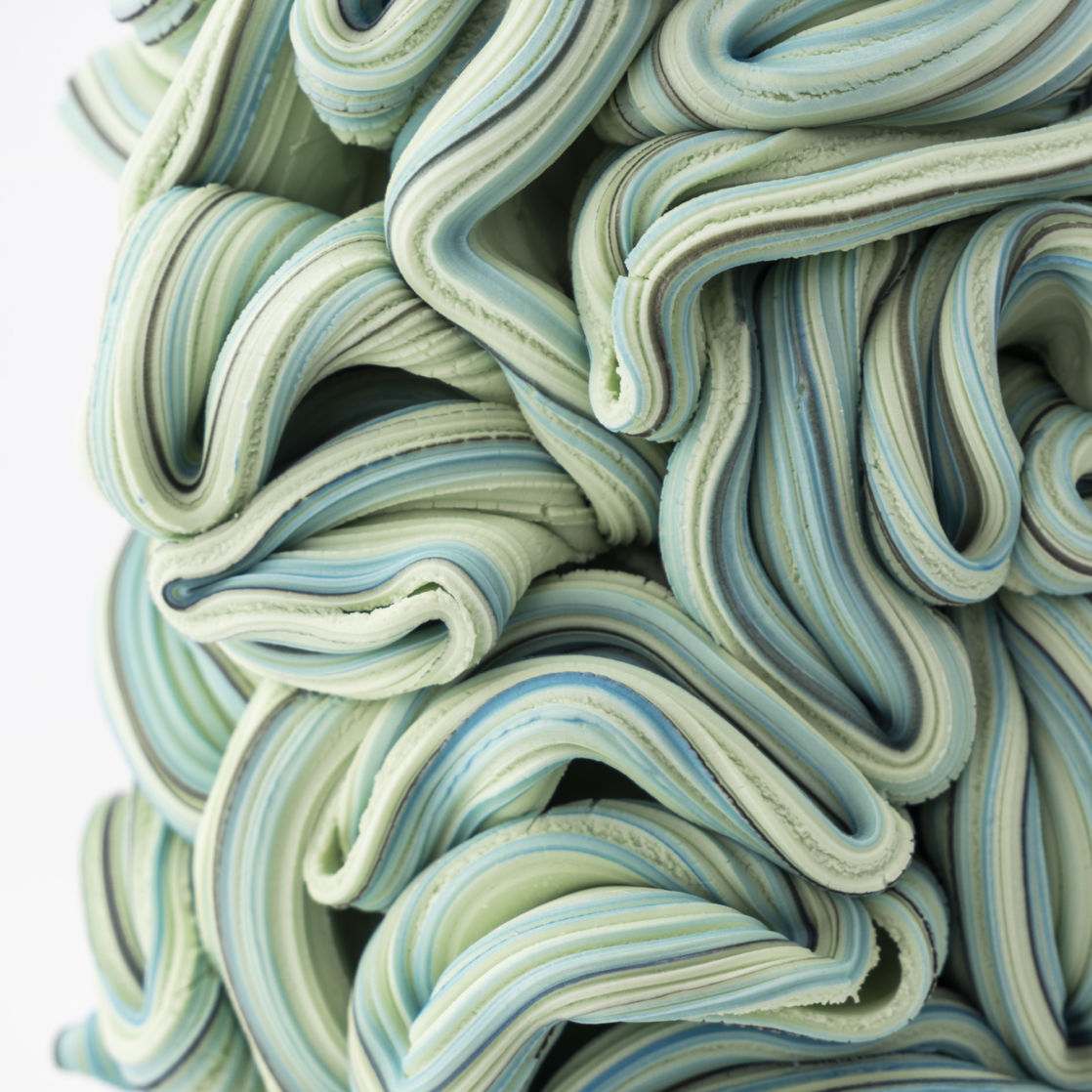
Work by Steven Edwards; courtesy of the artist
I make ceramic vessel sculptures that are inspired by an ongoing interest in both form and the making process. I apply specific steps to explore the materiality and physicality of clay. The processes I use push the limits of the clay to provoke a reaction and reveal aesthetic qualities that give the sculptures character and form. The application of a set process enables me to reveal seductive attributes of the clay. For example, my current work explores repetition, compression and cut. Repetition is the rhythmic throwing of forms, compression is the manipulation of the forms, and cut is the final act of creating a precise interior space in the stacked forms. I also use this approach to making as a method to create drawings, prints and writing, as a way for me to find further inspiration.
I describe myself as a ceramic artist. I am drawn to using materials in ways other than their conventional application. I want my work to question the function, delicacy and hierarchy of ceramic objects by testing my own skillset and exposing vulnerabilities in a final fired form. My practice of paring things down to a set procedure and instruction is influenced by my background as a graphic designer, where visual communication is used to break down information for the viewer. I want the viewer to share the experience of creating my work and encourage them to unravel the process of making the object. I am also interested in the correlation of tools to the practitioner and how they facilitate the making process.
My work is both thrown and handbuilt. I spend the majority of my time at the wheel throwing repetitive forms, applying surface texture with profiles and colour using slips. I then layer the compressed forms spontaneously by hand and use tools to shape and extract clay. I currently use parian porcelain clay due to its self-glazing qualities. The nature of parian means that all my interactions are recorded at the making stage. The contained energy, movement and mark making is captured during the building of the vessels – an exposed record of the making process, not covered up by the addition of glaze. Parian was developed as a liquid for casting and to resemble marble. I enjoy the fact that my practice challenges the conventions associated with the material to reveal different qualities. I mainly single fire my work in an electric kiln to 1235°C, increasing the temperature slowly to the self-glaze melting temperature of the parian clay.
It was during the exploratory practice of my MA course that I started to find my own unique voice and approach to making. I had struggled for some time to identify my connection to clay. I decided to manipulate thrown forms, deconstructing their finished precise appearance through force, creating new forms from ready-made shapes, and gauging interior space with purpose-made and found tools.
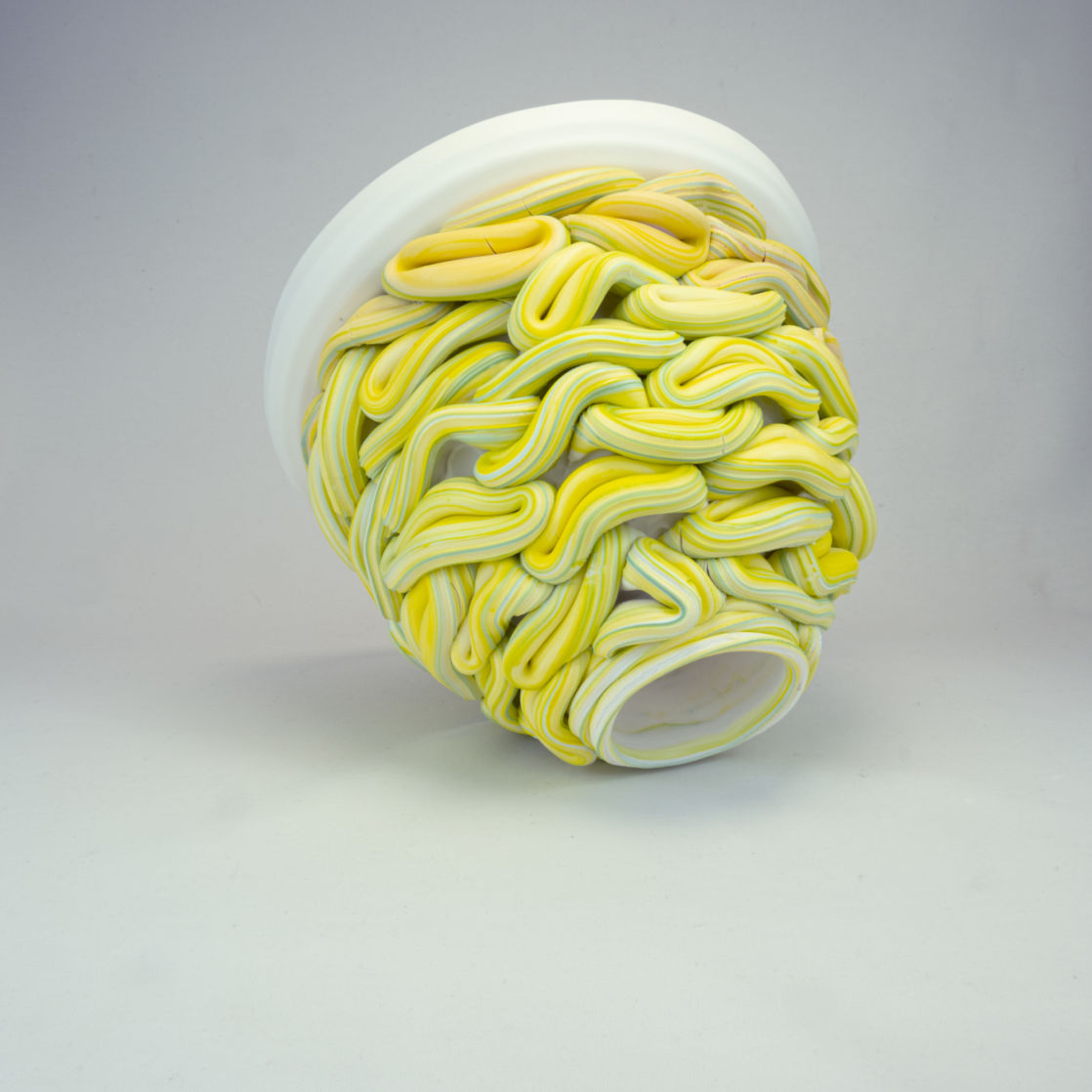
Work by Steven Edwards; courtesy of the artist
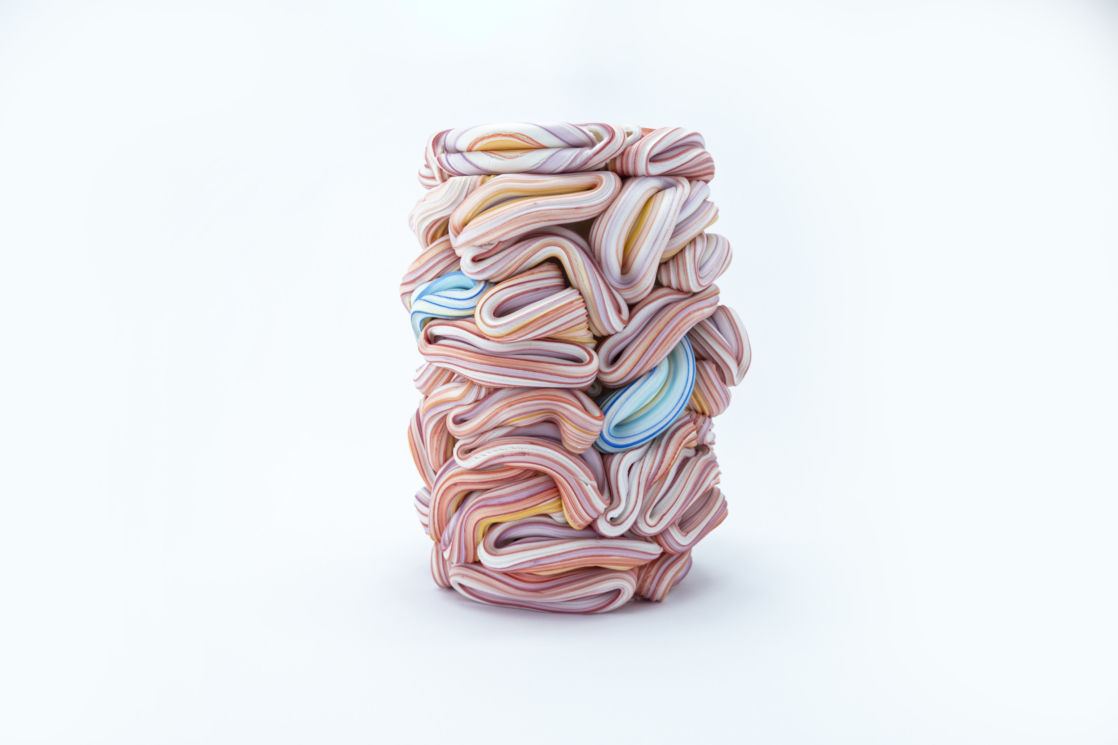
Work by Steven Edwards; courtesy of the artist
Having initially studied a BA (Hons) Degree in Applied Arts that specialised in ceramics, I started a career in graphic design. I was interested in manipulating and experimenting with software to create new ideas, forms and approaches to working in both 2D and 3D. Returning to an MA Ceramic Studies at the University for the Creative Arts, I began to look at clay in a new way. Using the experience I gained as a graphic designer, I introduced a different way of understanding aesthetics, processes, of clay in the hope that it will reveal something new and intriguing to explore.
Being taught to question all aspects of my working practice during my MA was an important development. My tutor, Nicholas Lees, encouraged me to embrace and learn from the processes I applied to my work, by putting aside the urge to control the characteristics of the clay during the different steps of making. Seeing Akiyama Yo’s Geological Age V at the V&A was also an influential turning point for me in terms of how his work evolves from continually pushing the physical properties of clay, and how he manipulates the tension between surface and form. I was drawn to the recorded motion in his sculptures and the connection to the geology of the earth.
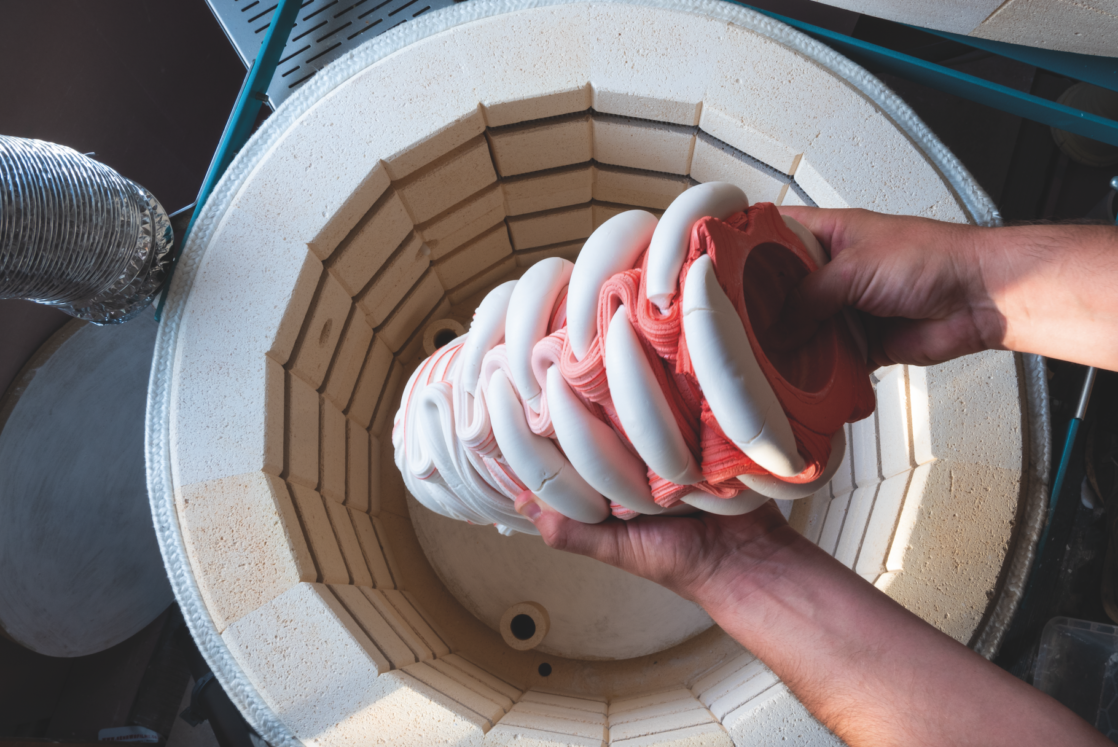
Work by Steven Edwards; courtesy of the artist
Following my studies, I was selected to participate in the emerging artist group Fresh at the British Ceramics Biennial 2019, this was a significant step in the exposure of my work. I created alternative figurative sculptures for the show based on the same making process. It was encouraging to receive recognition of my work in a major contemporary ceramic setting and a good opportunity to share how the work is made.
Viewers’ initial reactions to my work is to question if the sculptures are edible! Then there is an urge to touch the pieces to discover the texture, to check if they really are ceramic. This reaction is because the fired surface of parian clay has an edible sweet surface texture. I want to share the experience of the making process through the sensuous materiality of the shapes, and encourage the viewer to unravel how they are made. I initially felt I needed to explain how they are made, using a visual reference rather than performance. I wanted to explain that they are not extruded shapes – they are built from deconstructing crafted ready-made forms.
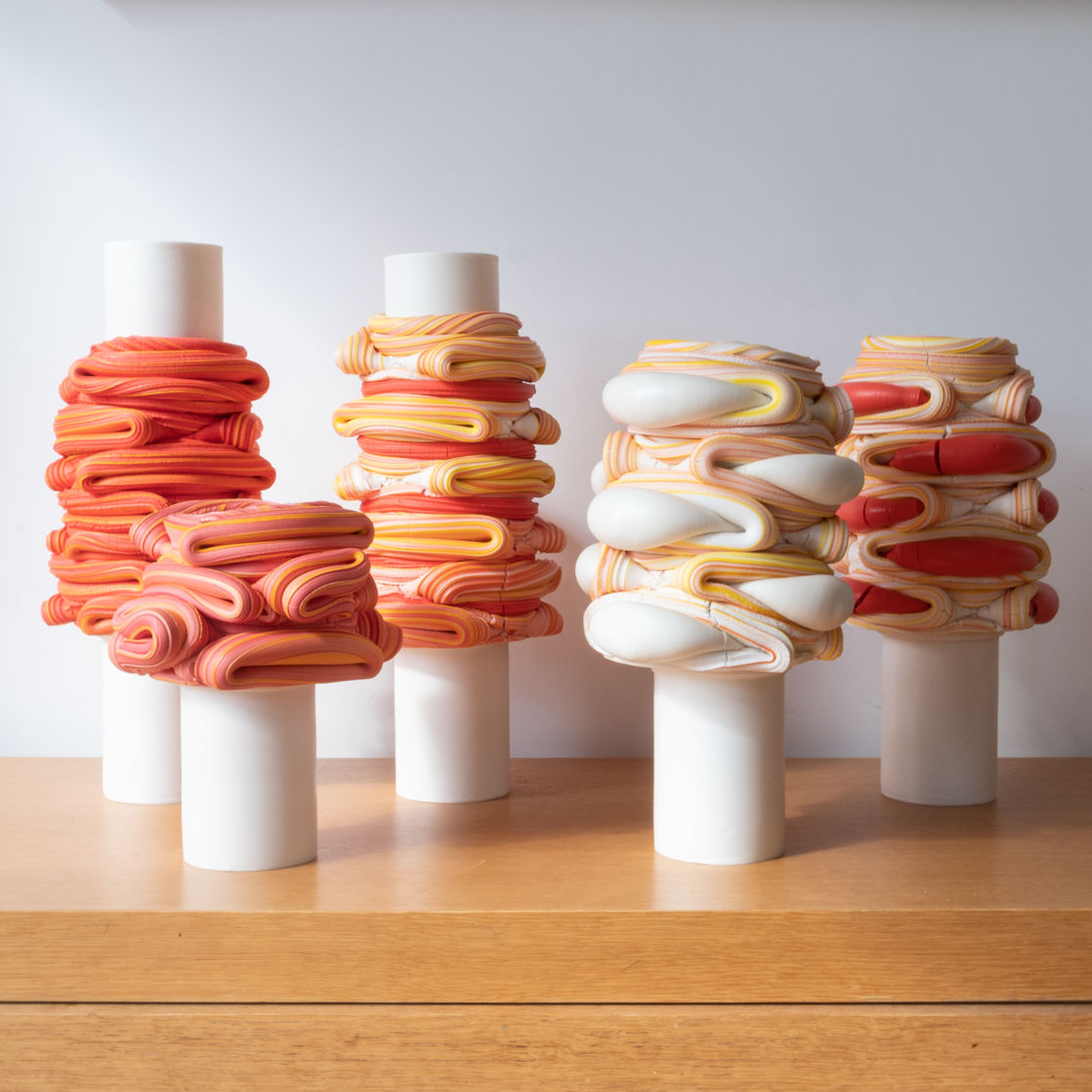
Work by Steven Edwards; courtesy of the artist
Aside from the desire to create larger scale work and explore other clays, my main aim is to continue developing my work guided by process. This approach to making offers many possibilities for experimentation across all aspects of my practice. Due to the demand of time to each making task, I intend to examine the process of making more closely. For instance, recording and observing data collected from the creation of individual components, such as revolutions of the wheel to measure distance, plus waste material that can be reclaimed for other forms, and analysing blends from the layering of colour.
Sharing the making process is important to me. My goal is to create an opportunity to group the work together in a show where the process, thinking and making is presented as a whole. Ideally this would be from work created during a residency. Although I have sold pieces directly and through galleries in the past 18 months, I haven’t had the experience of sharing my latest work in an exhibition setting due to Covid restrictions. I am really looking forward to presenting the work to a physical audience again at exhibitions later this year and next.
I would also like to run workshops where people are encouraged to explore the language of making through a playful experimentation of process. I have created workshops in the past with educational and corporate groups with a similar theme and found the collaboration of ideas to be an important extension of my practice.
For more details visit stevene.co.uk
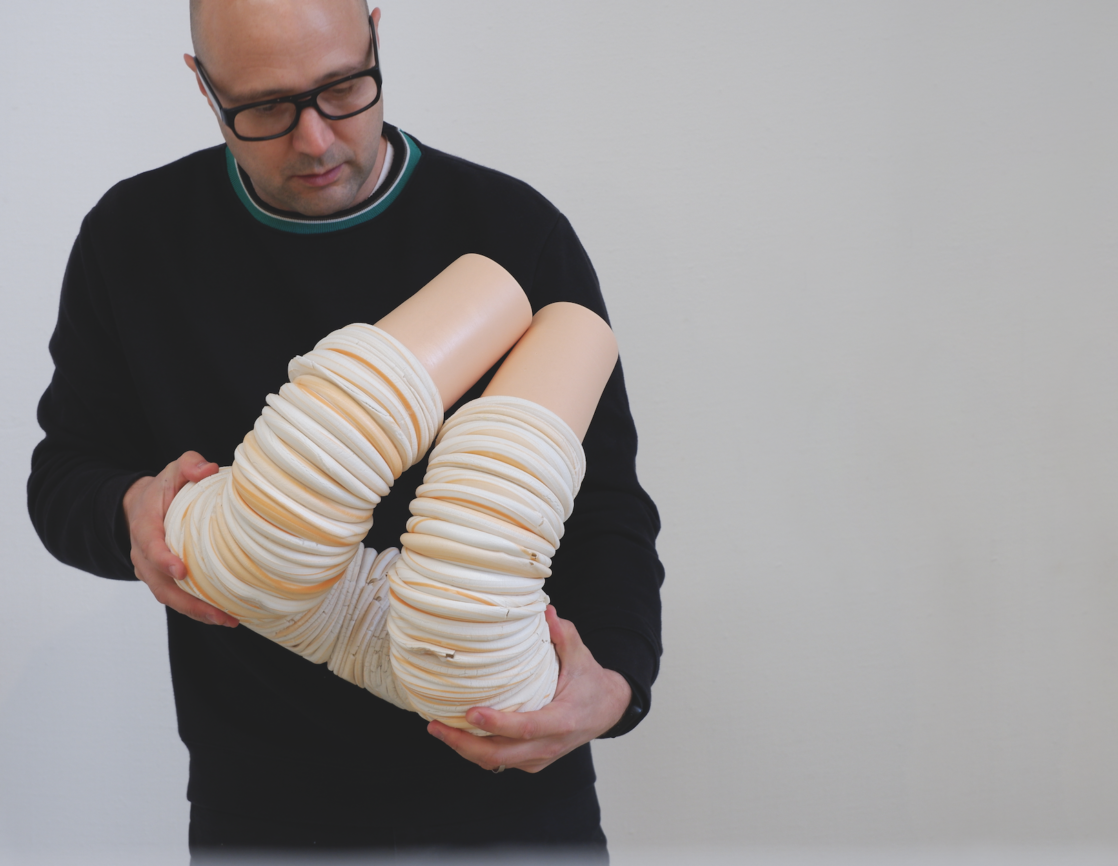
Work by Steven Edwards; courtesy of the artist